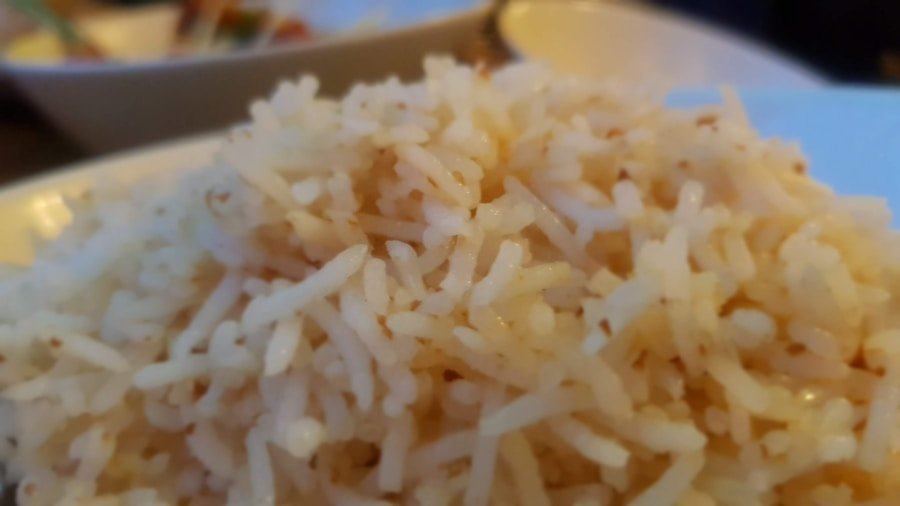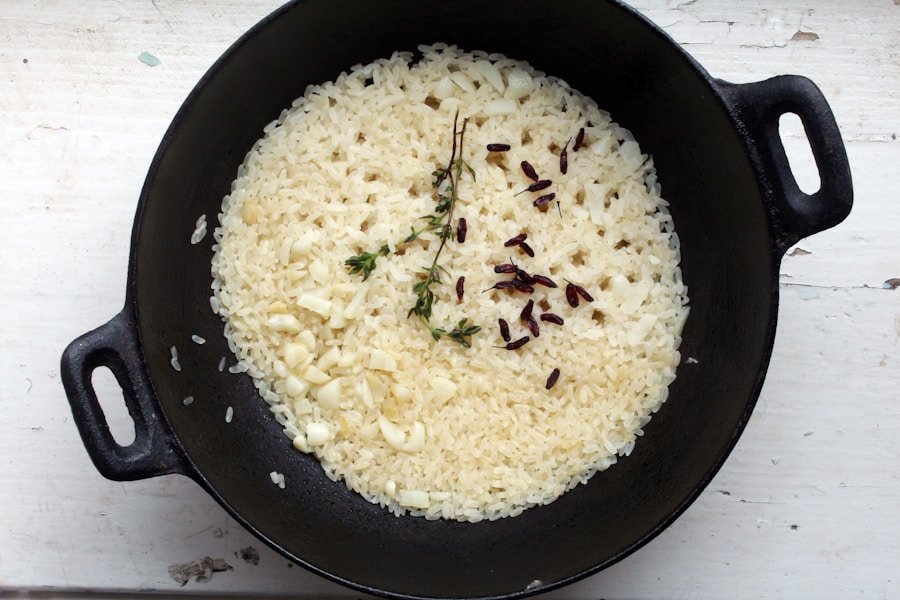Selecting the ideal rice cooker can significantly enhance your culinary experience, especially if rice is a staple in your diet. The market offers a plethora of options, ranging from basic models to advanced multi-functional cookers. When choosing a rice cooker, consider the capacity that best suits your needs.
For individuals or small families, a 3-cup model may suffice, while larger families or those who frequently entertain might benefit from a 10-cup or larger capacity cooker. It’s essential to assess how often you cook rice and for how many people, as this will guide your decision. Beyond capacity, the features of the rice cooker are crucial.
Some cookers come equipped with fuzzy logic technology, which allows them to adjust cooking times and temperatures based on the type of rice being prepared. This feature can be particularly beneficial for those who enjoy experimenting with different rice varieties. Additionally, consider whether you want a model with a steaming tray for vegetables or fish, as this can add versatility to your cooking.
A keep-warm function is also a valuable feature, ensuring that your rice remains at an optimal serving temperature without overcooking.
Key Takeaways
- Choose a rice cooker with the right capacity and features for your needs, such as a non-stick inner pot and different cooking settings.
- Different types of rice require different water-to-rice ratios and cooking times, so it’s important to understand the specific requirements for each type.
- Rinse the rice thoroughly before cooking to remove excess starch and improve the texture of the cooked rice.
- Experiment with adding flavorful ingredients like broth, herbs, and spices to the rice before cooking to enhance its taste.
- After cooking, let the rice sit for a few minutes before fluffing it with a fork to ensure even texture and moisture distribution.
Understanding Different Types of Rice
Rice is a diverse grain with numerous varieties, each possessing unique characteristics that influence cooking methods and flavor profiles. Long-grain rice, such as Basmati and Jasmine, is known for its fluffy texture and distinct aroma. These types of rice tend to remain separate when cooked, making them ideal for pilafs or as a side dish.
In contrast, medium-grain rice, like Arborio, is often used in risottos due to its creamy texture when cooked. Short-grain rice, such as sushi rice, is sticky and clumps together, making it perfect for sushi rolls or rice balls. In addition to these common types, specialty rices like black rice and red rice offer unique nutritional benefits and flavors.
Black rice, often referred to as “forbidden rice,” is rich in antioxidants and has a nutty flavor that pairs well with savory dishes. Red rice, on the other hand, retains its bran layer, providing additional fiber and nutrients. Understanding these differences not only helps in selecting the right type of rice for your dish but also enhances your overall cooking experience by allowing you to explore various textures and flavors.
Preparing the Rice for Cooking

Proper preparation of rice is essential for achieving the desired texture and flavor. Rinsing the rice before cooking is a crucial step that many novice cooks overlook. This process removes excess starch from the surface of the grains, which can lead to gummy or overly sticky rice.
To rinse the rice effectively, place it in a fine-mesh strainer or bowl and run cold water over it until the water runs clear. This indicates that most of the surface starch has been washed away. Soaking the rice is another technique that can improve its texture and reduce cooking time.
Soaking allows the grains to absorb some water before cooking, leading to a more even texture. For long-grain varieties like Basmati, soaking for 30 minutes to an hour is often recommended. Short-grain varieties may require less soaking time due to their higher starch content.
After rinsing and soaking, it’s important to drain the rice thoroughly to prevent excess moisture from affecting the cooking process.
Adding Flavorful Ingredients to the Rice
| Flavorful Ingredients | Effect |
|---|---|
| Garlic | Enhances savory taste |
| Ginger | Provides a spicy and aromatic flavor |
| Cilantro | Brings a fresh and citrusy taste |
| Lime Juice | Adds a tangy and zesty flavor |
| Coconut Milk | Creates a creamy and tropical taste |
Enhancing the flavor of your rice can elevate a simple dish into something extraordinary. One of the most effective ways to infuse flavor is by cooking the rice in broth instead of water. Chicken, vegetable, or beef broth can add depth and richness to the final dish.
Additionally, incorporating aromatics such as garlic, onion, or ginger can create a fragrant base that complements various cuisines. Sautéing these ingredients in a bit of oil before adding the rinsed rice can further intensify their flavors. Herbs and spices are also excellent additions for flavor enhancement.
Bay leaves, thyme, or saffron can impart unique tastes that transform plain rice into a culinary delight. For a Mediterranean twist, consider adding olives and sun-dried tomatoes during cooking. Alternatively, for an Asian-inspired dish, incorporating soy sauce or sesame oil can provide an umami kick.
Experimenting with different combinations of ingredients allows you to tailor the flavor profile of your rice to suit your meal perfectly.
Cooking and Fluffing the Rice
Once you have prepared your rice and added any desired ingredients, it’s time to cook it in your rice cooker. The general rule of thumb for water-to-rice ratios varies depending on the type of rice being used; however, most long-grain varieties require about 1 ¾ cups of water for every cup of rice. Medium and short-grain rices may need slightly less water due to their higher starch content.
After adding the appropriate amount of water and seasoning, close the lid and select the appropriate cooking setting on your rice cooker. After the cooking cycle is complete, allow the rice to rest for about 10 minutes before opening the lid. This resting period lets any remaining steam finish cooking the rice and helps achieve a fluffy texture.
When ready to serve, use a fork or a rice paddle to fluff the grains gently. This technique separates any clumped grains and enhances the overall presentation of your dish. Fluffing also allows excess moisture to escape, preventing sogginess.
Troubleshooting Common Rice Cooker Issues

Even with careful preparation and attention to detail, issues can arise when using a rice cooker. One common problem is undercooked or overcooked rice. If you find that your rice is consistently undercooked, it may be due to insufficient water or an incorrect setting on your cooker.
Always refer to your specific model’s instructions for guidance on water ratios and cooking times tailored to different types of rice. Another frequent issue is sticking or burning at the bottom of the pot. This can occur if there isn’t enough water or if the cooker’s non-stick coating has worn down over time.
To prevent sticking, ensure that you rinse your rice thoroughly before cooking and consider adding a small amount of oil or butter to the pot before adding water and rice. If burning occurs despite these precautions, it may be time to evaluate whether your cooker needs maintenance or replacement.
Cleaning and Maintaining Your Rice Cooker
Proper cleaning and maintenance are vital for prolonging the life of your rice cooker and ensuring optimal performance. After each use, allow the cooker to cool down before cleaning it. The inner pot should be removed and washed with warm soapy water using a soft sponge to avoid scratching its surface.
Avoid using abrasive cleaners or scouring pads that could damage the non-stick coating. The exterior of the cooker can be wiped down with a damp cloth to remove any spills or splatters. Pay special attention to any crevices where food particles may accumulate.
Regularly check the steam vent for blockages; this can be done by running hot water through it or using a soft brush to clear any debris. By maintaining cleanliness and addressing any issues promptly, you can ensure that your rice cooker remains in excellent working condition for years to come.
Creative Rice Cooker Recipes
The versatility of a rice cooker extends far beyond just cooking plain rice; it can be used to prepare an array of delicious dishes that showcase its capabilities. One popular recipe is coconut sticky rice with mango—a delightful dessert that combines sweet coconut milk with glutinous rice topped with fresh mango slices. Simply cook glutinous rice in coconut milk instead of water for an indulgent treat.
Another creative use for your rice cooker is making risotto without constant stirring—a traditional requirement for this creamy Italian dish. Start by sautéing onions and garlic in olive oil within the cooker before adding Arborio rice and broth gradually until creamy perfection is achieved. You can also experiment with savory dishes like one-pot jambalaya by layering sausage, shrimp, vegetables, and spices over seasoned rice for a hearty meal.
In addition to these recipes, consider using your rice cooker for breakfast options such as oatmeal or quinoa porridge by adjusting water ratios accordingly. The possibilities are endless when you think outside the box; from soups to steamed vegetables and even cakes, your rice cooker can become an indispensable tool in your kitchen arsenal.
If you’re looking to up your cooking game beyond perfecting fluffy rice, you may want to consider investing in one of the 5 Best Smart Meat Thermometers for Perfect Cooking. These handy gadgets can help ensure your meats are cooked to perfection every time, taking the guesswork out of grilling and roasting. With the right tools in your kitchen, you’ll be able to create delicious and healthy meals with ease.
FAQs
What is a rice cooker?
A rice cooker is a kitchen appliance used to cook rice. It automates the process by controlling the heat and timing, allowing for easy and consistent results.
How does a rice cooker work?
A rice cooker works by using a heating element to bring the water and rice to a boil, then automatically reducing the heat to simmer until the water is absorbed and the rice is cooked.
How do I make fluffy rice in a rice cooker?
To make fluffy rice in a rice cooker, rinse the rice to remove excess starch, add the appropriate amount of water, and then let the rice cooker do the rest. Avoid lifting the lid or stirring the rice during the cooking process.
What type of rice is best for making fluffy rice in a rice cooker?
Long-grain white rice, jasmine rice, and basmati rice are all good options for making fluffy rice in a rice cooker. These types of rice tend to cook up light and fluffy.
How much water should I use when making rice in a rice cooker?
The general rule of thumb is to use a 1:1 ratio of rice to water for most types of rice. However, some types of rice may require slightly more or less water, so it’s best to consult the rice cooker’s instructions or the specific rice package for guidance.

